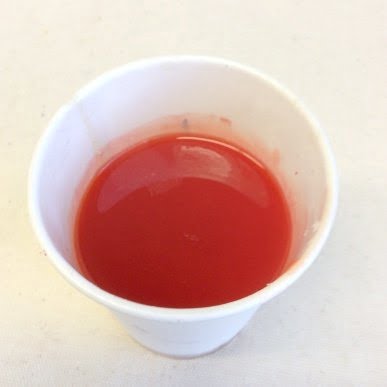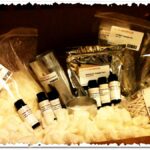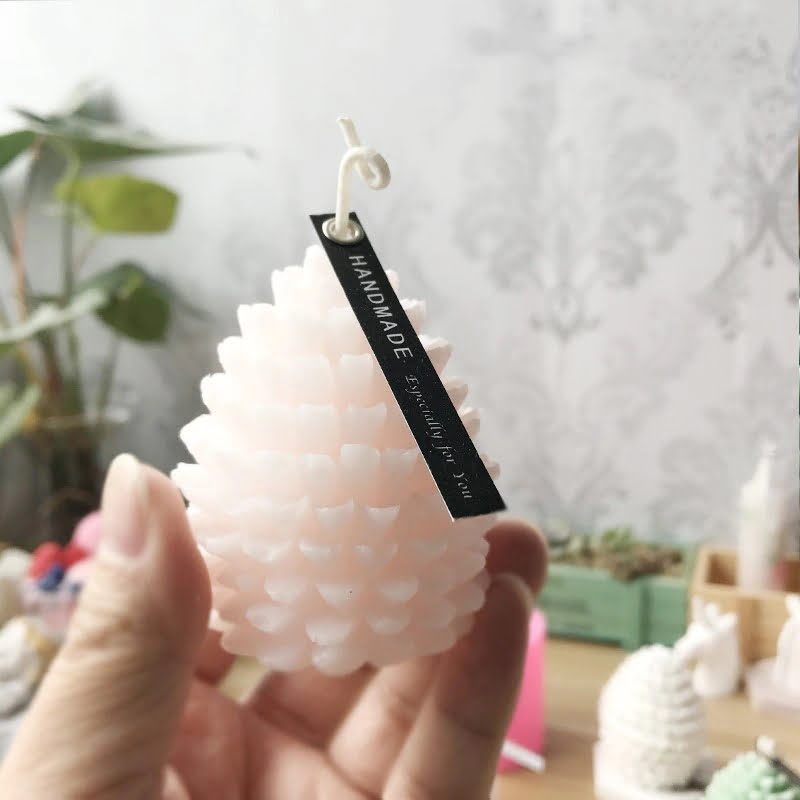Introduction
Wax is a hydrocarbon material that can be found in many different forms. It is often made of petroleum or animal fats, and it has an oil-like consistency when in liquid form. Wax can also be found naturally in plants and animals, such as beeswax and carnauba wax. It is a common ingredient used to create candles, providing the fuel that enables the candle to burn as well as a stable shape for the candle.
There are several benefits of wax when used for candles. One benefit is that it helps to extend the life of the candle while yielding a longer, brighter flame. Wax also helps to provide fragrant scent from essential oils when used in scented candles. In addition, wax acts like insulation to prevent too much heat from escaping when burning a candle, making for safer use.
When choosing what type of wax to use for making essential oil candles it is important to take into account several factors that determine what makes an effective candle wax. For example, one factor to consider is its melting point; how quickly does it melt once heated? Too low of a melting point might cause the candle to not produce much light or emit much fragrance from the essential oils. On the other hand, too high of a melting point might make the wax difficult to work with and mold into shapes when creating candles. Furthermore, understanding whether the wax will hold its shape while hardened (such as when pouring multiple wicks) along with its ability to adhesion should also be considered before buying any type of bulk wax for crafting your own candles at home. Ultimately your choice should boil down which type best meets all these criteria without compromising on any aspect or factor you would want from an ideal wax for making essential oil candles.
Types of Wax Used for Candle Making
Paraffin wax is one of the most popular types of wax for making essential oil candles. It has a low melting point and it is easy to work with. It does not have any scent and can be used in a range of shapes, sizes, and colors. However, paraffin contains volatile organic compounds (VOCs) which can be harmful and toxic to humans, so keep this in mind when selecting a wax for aromatherapy candles.
Beeswax is another popular choice for candle makers. It gives off a pleasant honey-like smell and it lasts longer than paraffin. In addition, beeswax doesn’t contain VOCs or other dangerous chemicals likeparaffin does. The downside to beeswax is that it is more expensive than paraffin but its long-burning capabilities may make up for its pricetag.
Soy wax is becoming increasingly popular among candle makers because it produces clean burning flames with virtually no smoke or soot residue. Soy candles also burn cooler, decreasing the risk of burns to skin. Soy also has a creamy texture that makes it much easier to work with than paraffin or beeswax so if you are looking for an easier option ” soy could be the right fit for you.
Finally there are other types of wax out there such as palm wax which comes from palm trees, rapeseed wax which comes from pressed oilseed crop or vegetable wax derived from coconut/palm/soybean oils that all present unique characteristics as potential essential oil candle options! Before purchasing any type of wax, ensure that you read all safety precautions outlined on the product label since each have their own characteristics to watch outfor!
Benefits of Using Specific Types of Wax to Make Essential Oil Candles
When you are looking to make essential oil candles, choosing the right type of wax is key to achieving a superior product. Different types of waxes have different benefits when used in candle making. For example, beeswax has a longer burn time and has natural antibacterial properties. Soy wax is also popular for its all-natural ingredients and ability to hold scent better than other types of wax. In addition, paraffin wax is also great for its cost effectiveness and scent holding capabilities.
No matter what type of wax you choose, it’s important that the scents from essential oils blend well with the wax used to make your candles. For this reason, many candle makers employ a mixture of different styles of waxes”for example, combining paraffin and soy”as this hybrid combination can provide both durability and strong scents that linger in the air when burning. Additionally, if you are striving for a more natural look and feel to your candles, then opting for plant-based or vegan options like coconut or palm may be an ideal choice instead.
Overall, while there are many kinds of wax on the market chosen depending on preference- aesthetic or performance based- selecting one with superior ability to hold scent and produce an even burn may be best suited as these provide a superior finished product as far as candles go. Careful experimentation will help determine which kind works best with your specific recipes.
Wax Purposes to Consider for Each Candle
Softening: When selecting wax for your essential oil candles, you may want to consider a softer wax like vegetable or beeswax. These waxes provide a low melting point and remain soft even when cold, making them ideal for holding and releasing the fragrant oils from within the candle.
Scent Retention: If you prefer having a strong scent to your essential oil candles, you may want to consider paraffin or soy wax as these two waxes are known for their long-lasting scent retention.
Melting Point: The melting point of any wax that is used in essential oil candles must match the temperature at which the oils reach their peak fragrance release rate. So, it is important to select a wax with a lower melting point such as coconut wax or microcrystalline to ensure maximum fragrance release while still burning evenly and slowly.
Viscosity: The viscosity of the candle’s wax plays an important role when it comes to maintaining its shape and structure during burning. Generally speaking, heavier, denser candles can withstand higher temperatures without warping or sagging whereas softer blends tend to be more pliable but can misshape more quickly due to high heat exposure. That being said, using natural ingredients like beeswax helps reduce heat exposure while still offering great hold in your candle’s integrity.
How To Determine the Best Wax to Use for A Specific Candle
When considering the best wax for making essential oil candles, it is important to note that each type of wax brings its own unique properties to the candle. In order to determine which wax will best suit your desired aromas, burn time, look and feel the following criteria should be taken into consideration:
1) Sustainability: Certain types of wax are more sustainable than others. Natural-based waxes like Soy are much more eco-friendly because they are derived from plants rather than petrochemicals.
2) Desired Burn Time: Different types of wax can achieve varying burn times. Beeswax, while relatively expensive, has an incredibly long burn time compared to other natural oils like soy or paraffin.
3) Desired Aromas: Different waxes hold different levels of scent retention which can affect how strongly a candle will smell when lit. Paraffin and beeswax generally hold less scent than soy and coconut but offer a stronger aromatic throw for their respective weight when used in aromatherapy applications.
4) Desired Look & Feel: Each type of wax will give a candle a unique aesthetic during burning as well as when solid again after cooling down – so you’ll want to choose the type that best matches what you are looking for in your finished product such as creating crackle effects with paraffin or harder shells with beeswax candles.
By taking into consideration these factors together you can decide on the most suitable option for making your desired essentials oil candles!
Tips and Tricks for Working With Different Types of Wax
When it comes to making essential oil candles, the best type of wax to use is soy wax. Soy wax is made from hydrogenated soybean oil and has a good melting point that melts easily when heated and will hold its shape better than some other types of wax.
Before you start making your essential oil candles, it’s important to understand how to set the correct temperature for your candle’s wick and container. Your wick should be pre-waxed with one of the following: vegetable stearin, paraffin-based wax or perhaps even beeswax. Depending on the type of wick you select, it may need to be pre-treated with different waxes at different temperatures. Always check the directions on the packaging for instructions.
Next, you’ll need to set the proper temperature for melting your chosen wax. A good basic rule is that soy wax should melt between 70 – 90°C depending primarily on what scent you want to add in your blend (higher temperatures help activate more complex aromas).
Some people prefer double boiling methods in order to help ensure an even melt throughout their melted wax; this technique involves performing two layers of boiling, one within a hot water bath while leaving space around the cup so that there are no bubbles trapped inside when pouring into molds. Additionally, some makers recommend mixing finely ground sea salt into your essential oil blend as a thickening agent prior to double boiling. This helps keep all the ingredients suspended during pouring and avoids any “baking off” process after they’re cooled down.
Finally, always make sure that when melting any type of waxes in a pot on top of a stovetop burner or open flame heat source, never leave them unattended; this not only increases safety but also makes sure that temperature does not get too high and risk scorching your product!
Troubleshooting
When it comes to making essential oil candles with wax, not all waxes are created equal. To ensure your final candle is of the highest possible quality and burning sustainably, using the right type of wax is essential. The most popular waxes for making candle work are soy wax, palm wax and beeswax. Each has their own benefits and should be chosen based on personal preferences.
Common mistakes when working with wax include using too much or too little wick – a wick that is too small will cause a flame to go out quickly while a large one can cause smoke or even fires. It’s important to use the right size of wick as this will affect how well your candle burns and its scent throw. Additionally, melting the wrong amount of wax can also have an effect on the quality of the final product; if there isn’t enough melted wax, air bubbles can form, leading to an uneven burn or poor overall texture of the finished candle. Finally, over-pouring ” where more liquid melted wax is poured into a container than it can hold ” causes tunnels in the finished product and can lead to leaking from the bottom. All of these issues are easily avoidable by double-checking measurements before beginning your project and purchasing high-quality materials for pouring purposes like thermometers or pre-fitted metal supports for your wicks.
Conclusion
Once you have decided which type of wax is most suitable for your candle making needs, it is important to ensure that the wax you choose meets all the requirements demanded by your project. Soy wax, paraffin wax and beeswax are all excellent choices for making essential oil candles and each has its own unique characteristics based on fragrance, amount of burn time provided, how soft or hard it is in texture, and fully utilizing essential oil scent. Ultimately, whatever type of wax you decide to work with must also fit into your budget. To maximize the experience associated with any candle made from essential oils, research each of your chosen locations thoroughly and understand their differences before jumping into a decision. Once you have done due diligence in this area, then making an informed decision will be much easier.

Welcome to my candle making blog! In this blog, I will be sharing my tips and tricks for making candles. I will also be sharing some of my favorite recipes.





